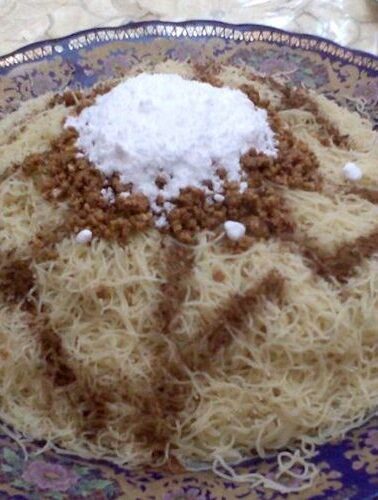Typical sweets from Morocco
Moroccan desserts compose an epic written with sugar and spices, dancing to a triple melody of Arabian roses, Mediterranean citrus, and Saharan dates. These sweet arts steeped in millennia of civilization carry both the wild breath of Berber nomads and the refined DNA of Andalusian courts.
With marked influences from the Middle East, Africa and the area that embraces the Mediterranean, Moroccan cuisine presents a remarkable diversity in its elaborations, both sweet and salty. Regarding the former, dates and honey are two frequent ingredients in many of the recipes. Almonds(ground), cinnamon, orange blossom water, lemon peel, sugar glaze, dried figs, pistachios and sesame seeds, among others.
Chebakia
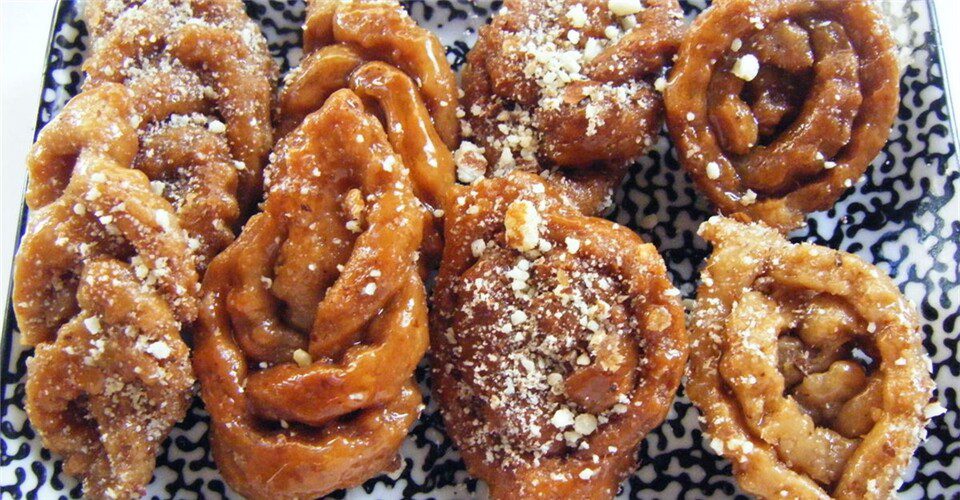
This traditional Moroccan delicacy known as Sellou Semolina Cones transforms in the palms of artisans through three sacred stages: dough infused with cinnamon and anise is cut into deft rectangles, then masters carve four interlacing grooves with ancestral knife skills—not merely decoration but embodying the Islamic artistic symbolism of “Four Rivers of Paradise.” When the pastry ripples gold in olive oil, it’s dipped warm into streams of Atlas wild honey, finally adorned with toasted sesame stars.
Each step contains ancient wisdom:
The cinnamon-anise ratio corresponds to the body’s blood sugar regulation needs after prolonged fasting
Four carvings ensure even heat distribution during frying, creating the perfect crisp-exterior-and-moist-interior texture
Sesame seeds applied before honey solidification form a moisture-locking protective layer
When sunset calls echo from mosques at Iftar, Moroccans use these golden diamonds凝聚 with earth’s blessings to gently awaken stomachs slumbering all day, allowing sacred rituals to blossom into a sweet cosmos between their teeth.
Sharbat
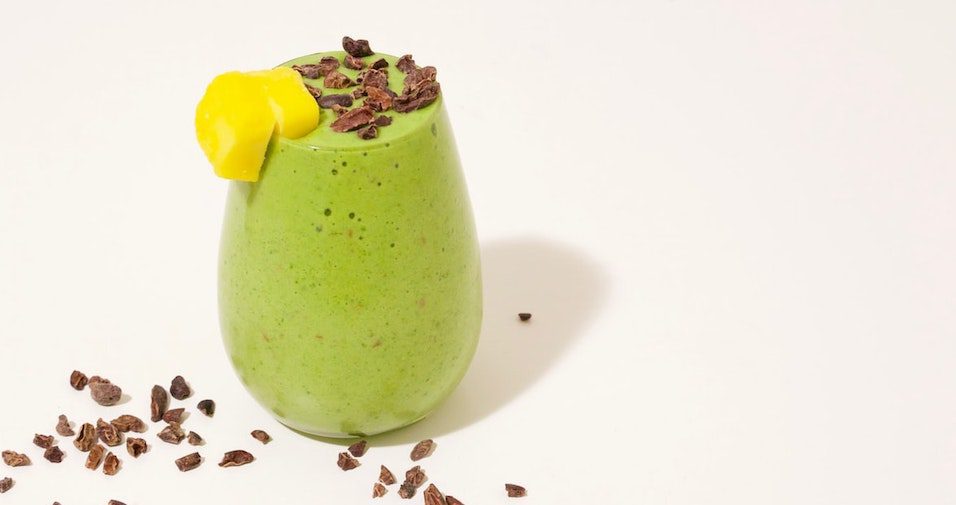
This enchanting beverage called Rose Almond Milk embodies Moroccan wisdom against desert heat. Its base recipe shines with lunar purity: fresh goat’s milk and stone-ground almonds slow-ground in clay urns for seven hours, infused with Damascus rose distillate, finally sprinkled with Lebanese pine nut crumbs. When served in engraved copper cups, condensation beads on the vessel’s surface and floating rose petals create visual refreshment.
This non-alcoholic nectar possesses countless variations:
Sahara Edition: Blended with prickly pear pulp and orange blossom water, served in cobalt glassware
Coastal Edition: Mixed with coconut meat and sea fennel, adorned with edible silver leaf
Royal Edition: Infused with saffron filaments and gold flakes, presented in Fes polychrome pottery decanters
In Marrakech’s Djemaa el-Fna square, vendors peddle this “liquid jewel” from mirror-inlaid sandalwood chests; in Fez’s ancient medical school ruins, physician manuscripts record its traditional use for treating heatstroke. When twilight descends during Ramadan, this drink shimmering with moonlight and floral essence serves both as joyful substitute under religious observance and as ambrosia connecting modern Moroccans to their ancestors’ gustatory memories.
Almond Ghoriba
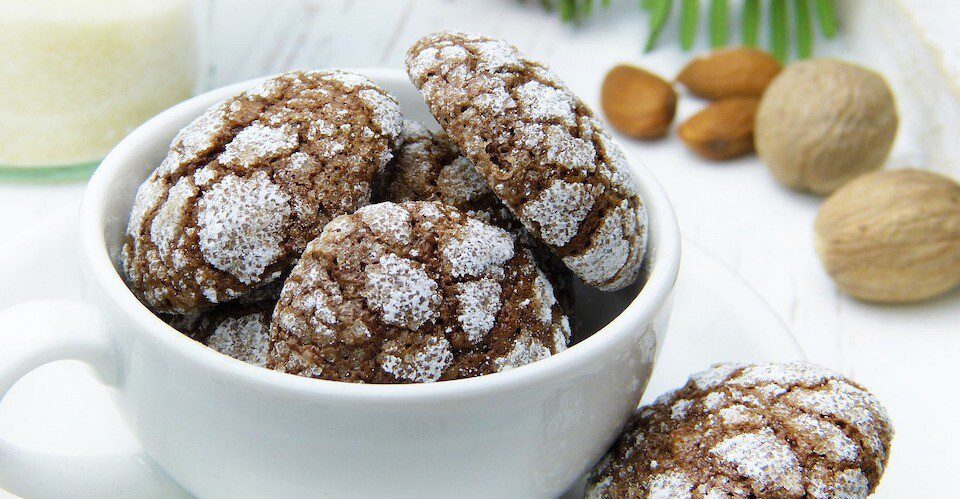
These almond pastries called M’grouz are truly jewels in Morocco’s dessert treasury. Almonds and walnuts are pounded in stone mortars into textured granules, blended with orange blossom water and lemon zest, then hand-shaped into olive forms before being baked in traditional clay ovens until golden-edged. The final ritual involves rolling them three times in powdered sugar until achieving a velvety, snow-dusted surface.
The true marvel lies in its layered sensory experience:
First layer: Powdered sugar dissolves on the tongue like morning dew in the desert
Second layer: Orange blossom aroma gradually releases with each chew
Third layer: Warm almond fragrance and walnut’s richness linger in the throat
When you watch master artisans adorn these pastries with gold leaf using Berber silver tweezers in Fez’s ancient tea houses, when Marrakech’s afternoon light filters through carved windows, illuminating the mist of mint tea interwoven with sugar frost—this pastry传承 through twelve centuries becomes a gustatory messenger connecting Andalusian courts with Sahara caravan memories.
Pastilla
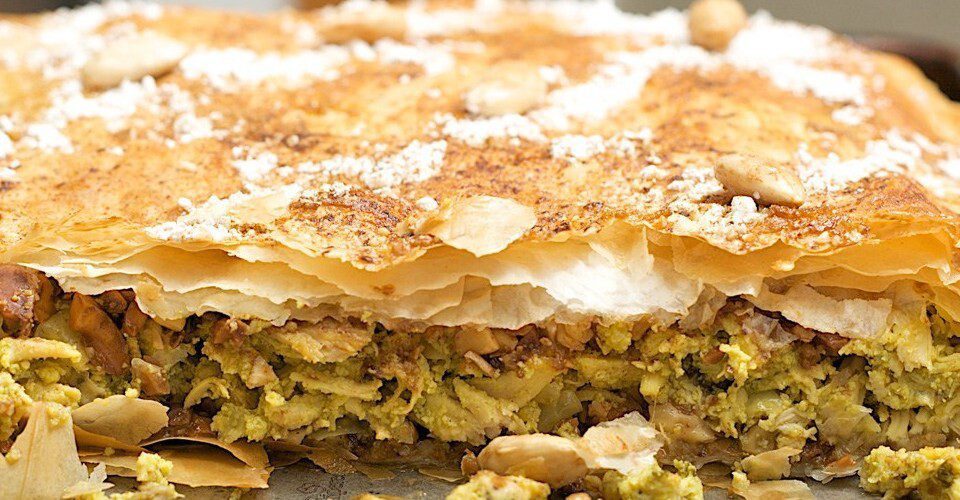
This celebrated “national treasure” of Morocco perfectly embodies the philosophical wisdom of sweet-savory fusion in North African cooking. Its preparation resembles gustatory alchemy: pigeon (traditional version) or chicken is slow-cooked with saffron and onions until falling off the bone, while roasted almonds are crushed to form a golden filling with cinnamon and powdered sugar. The most exquisite aspect lies in the wrapping technique of phyllo layers—seven sheets thin as cicada wings, each brushed with clarified butter, creating a moonlit, thousand-layer crispness after baking.
As the overture to festive banquets, Pastilla’s presentation is itself ceremonial:
The grid pattern of powdered sugar and cinnamon corresponds to Marrakech palace window geometries
Edible gold leaf decorations continue Morocco’s royal entertainment traditions
Traditional cutting must preserve pastry integrity, requiring specialized double-edged knives
When you hear the crisp sound of cutlery piercing through the pastry in Fez’s traditional courtyards, when powdered sugar trembles like first snow on the golden surface, this culinary heritage spanning six centuries becomes a time tunnel connecting modern dining tables with One Thousand and One Nights feasts.
Sfenj
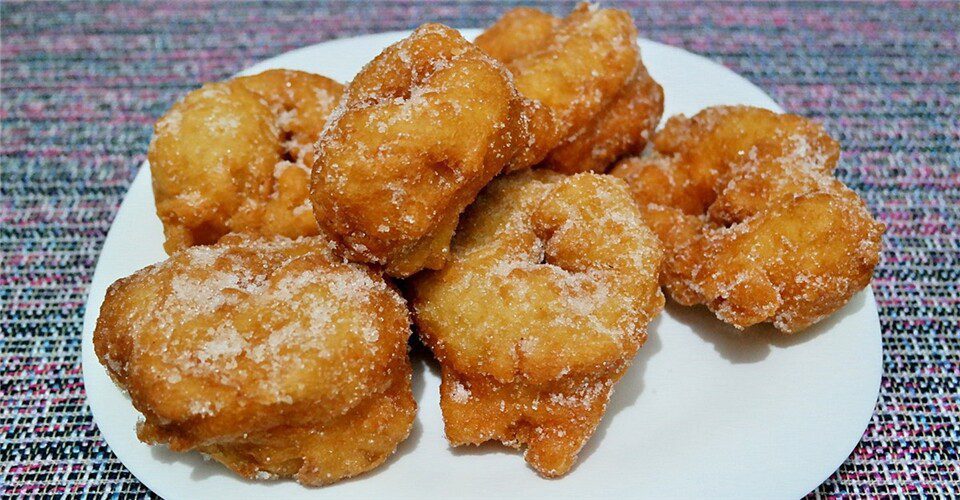
Found at nearly every street corner in Morocco, the famous “donuts” known as Sfenj hold a special place in the local culture. The word “Sfenj” comes from Arabic, meaning ‘sponge’—a fitting description for these unsweetened dough rings that are deep-fried to a perfect balance: crispy on the outside while remaining incredibly soft, airy, and sponge-like inside. Typically enjoyed for breakfast or during afternoon tea, they are served warm, drizzled with golden honey or dusted with sparkling sugar, and paired with a refreshing pot of mint tea. With each sugary, tender bite, Sfenj does more than satisfy cravings; it evokes cherished memories of childhood and home—the comforting aroma from a grandmother’s kitchen, the familiar call of street vendors, and the sweet taste of nostalgia woven into the fabric of Moroccan life.
Sellou
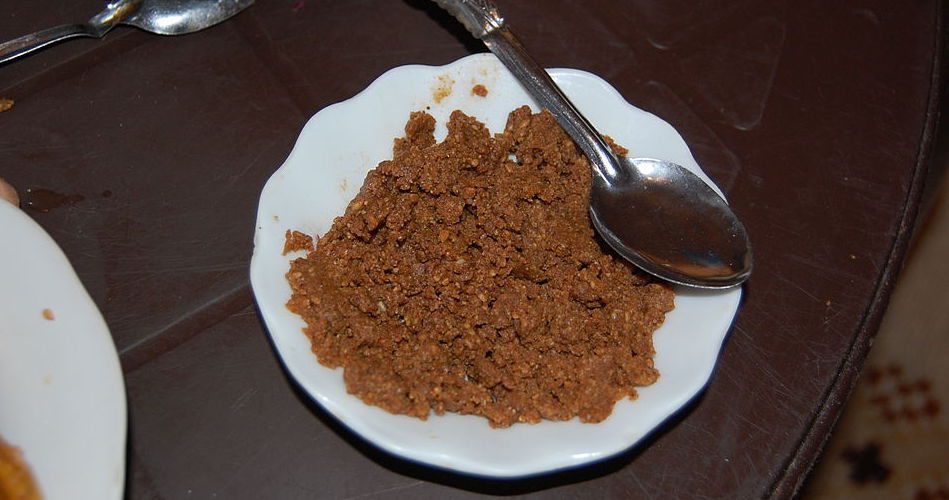
This is a classic, no-bake Moroccan delicacy prominently featured during the holy month of Ramadan, as well as at family gatherings and festive occasions. It is crafted from a rich blend of ingredients: flour, sesame seeds, almonds, butter, honey, roasted anise, cinnamon, and sugar. The mixture is meticulously combined and hand-shaped into distinctive conical “pyramids.”
Sellou is renowned for its potent energy-boosting properties. Its dense concentration of nuts, seeds, and natural sugars makes it the ideal food to replenish energy and revitalize the body after a long day of fasting. Beyond its nutritional role, this deeply aromatic and flavorful treat, with its warm spices and nutty sweetness, embodies a sense of community and celebration, offering comfort and sustenance in every bite.
Maskina

This iconic dessert is a masterpiece of layers upon layers of paper-thin pastry, meticulously brushed with olive oil and filled with a generous mixture of finely chopped walnuts, almonds, and hazelnuts. The core recipe also involves wheat flour, sugar, and cream, which contribute to its distinct texture and richness.
After baking to a perfect golden crisp, the pastry is drenched in aromatic sugar syrup, allowing the sweetness to seep into every layer. It is always presented as a large tray of dessert, pre-cut into diamond or square portions. Celebrated for its flaky texture and nutty sweetness, Baklava stands as one of the most beloved delicacies for nut lovers around the world.
Seffa
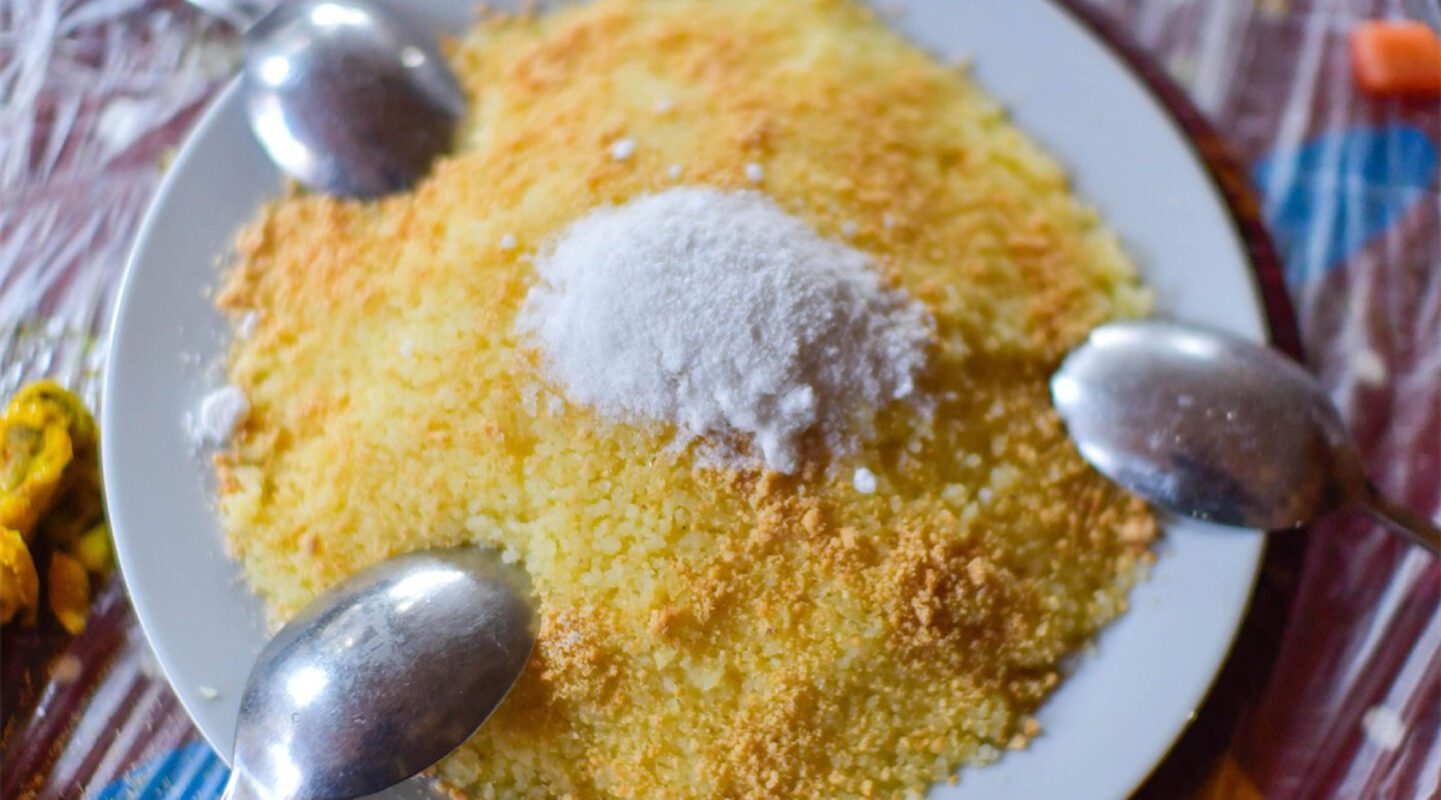
This beloved sweet dish starts with a base of fluffy, steamed couscous. While still warm, it is meticulously mixed with butter and a generous amount of confectioner’s sugar until it becomes incredibly moist and sweet. The magic lies in the addition of vermicelli or “angel hair” pasta, which provides a delightful contrasting texture, along with plump raisins for bursts of fruitiness.
It is traditionally presented molded into a graceful mound. Just before serving, it receives a final snowy dusting of powdered sugar and a warm sprinkle of cinnamon, all crowned with decorative toasted almonds. The combination of soft couscous, buttery vermicelli, sweet raisins, and crunchy nuts creates a symphony of textures, making Seffa the star of children’s parties and family celebrations.
Fekkas
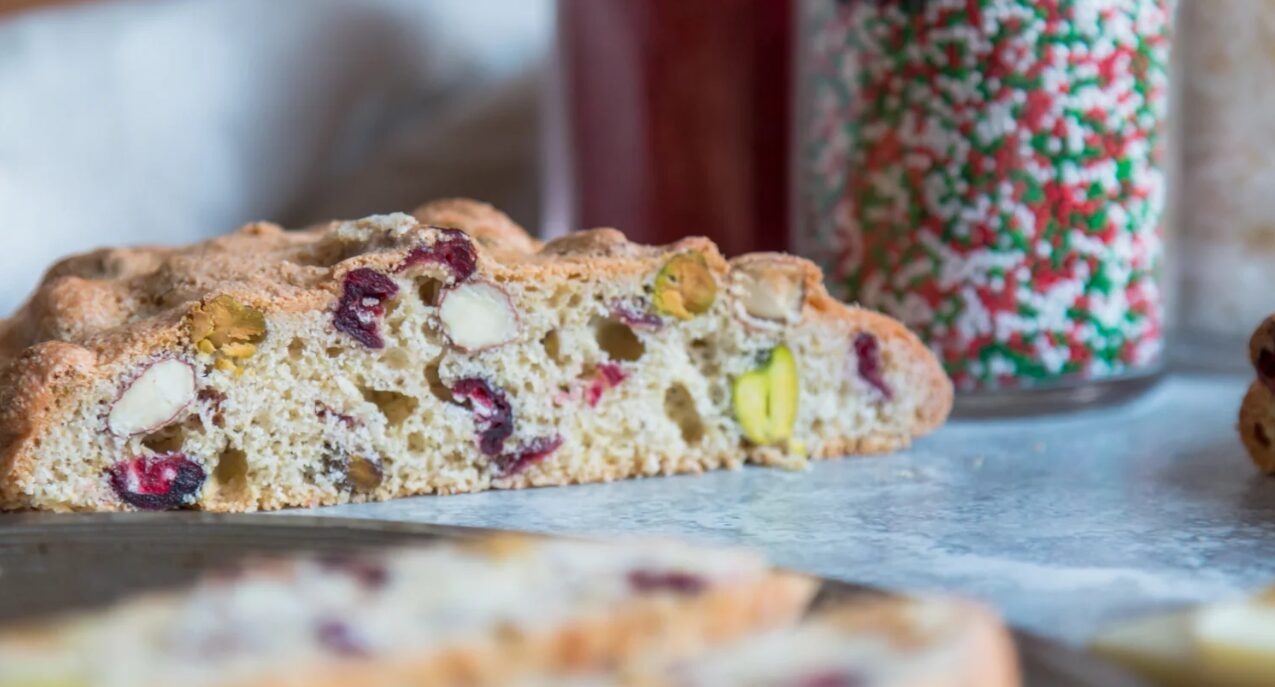
These delicious, twice-baked biscuits are a cornerstone of Moroccan hospitality. The classic sweet version is prepared with a hearty mix of flour, sugar, butter, almonds, raisins, sesame seeds, vanilla, and cinnamon. This dual-baking process gives Fekkas their signature dry, crunchy texture, making them the perfect companion for dipping into a glass of sweet mint tea.
True to the versatile spirit of Moroccan cuisine, Fekkas come in a delightful duality: the more common sweet variety (often with nuts) and a savory counterpart, which incorporates cheese, garlic, an array of spices, and lemon for a zesty, savory bite.
Is your mouth watering yet? Embark on a culinary adventure to Morocco—you will undoubtedly fall in love with its diverse array of spices and the most enchanting, exotic flavors!
Contact us for more travel information!

